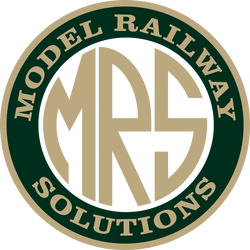
Dapol 4P-020-512 GWR Toplight M/Line City BR Maroon Second 3912 Set 6 - OO Gauge
The first order for these coaches was placed in 1915 but, due to the First World War, they were not built until 1920. The second batch was completed in 1921. Six sets of coaches were produced with each set comprising six coaches. The coaches were close coupled and constructed with a steel body rather than the traditional wooden panelling. Due to the restrictive loading gauge of the London Underground tunnels, the carriages are 7 inches lower than other contemporary carriages of the time. This enabled them to travel directly to Aldgate and Liverpool Street, on the Metropolitan Underground system.
The coaches were originally used for commuter traffic from the likes of Reading and Windsor into the City of London. At the start of the Second World War this service was curtailed. However, after the war and into BR days the coaches could be found on services much further afield.
The coaches started to be removed from revenue-earning service in December 1956 and all gone by December 1957. There was only one significant change made to the design during the lifetime of the coaches, which was the removal of one roof ventilator from each compartment.
1n 1958, two brake third coaches and one all third coach were converted into workmen's coaches for the miners service between Glyncorrwg and North Rhondda Halt, which was a former branch line of the South Wales Mineral Railway. The main changes were the addition of an extra window in the end of the guards luggage area and a fitting of a gong to the same end of the coach. This makes coaches 3755, 3756, and 3910 the last three coaches in service. 3755 is fully preserved at Didcot Railway Centre with 3756 being partially restored.
MODEL
Dapol will be producing an all third, composite and brake third coaches which are the perfect companion to the Dapol 61xx Prairie 2-6-2 just released.
FEATURES
The Dapol OO Gauge GWR Toplight Mainline City coaches will have the following features and details:
- Highly accurate injection moulded body with bolection window mouldings and frosted Toplight windows.
- Separate metal door and commode handles
- Wire end hand rails and separately applied end communication details
- Correct number of roof ventilators depending on the prototypical period being modelled
- Highly detailed chassis with vacuum tanks, battery boxes and brake linkages all to a high degree of fidelity
- 9ft bogie bolster with dicast side frames and split axles for electrical pick up
- Highly detailed interior with period specific decorations being applied
TECHNICAL SPECIFICATION
As well as an impressive selection of aesthetic details the coaches will have an impressive technical specification which includes the following features:
- Kinematic couplings with NEM pockets including special coupling bar to give close coupling
- Coaches are capable of negotiating R2 radius curves
- Sprung metal buffers
- Internal lighting and directional tail lamp. Can be optionally DCC fitted with a six pin decoder such as the Dapol Imperium Four.
- Heavy Diecast chassis


